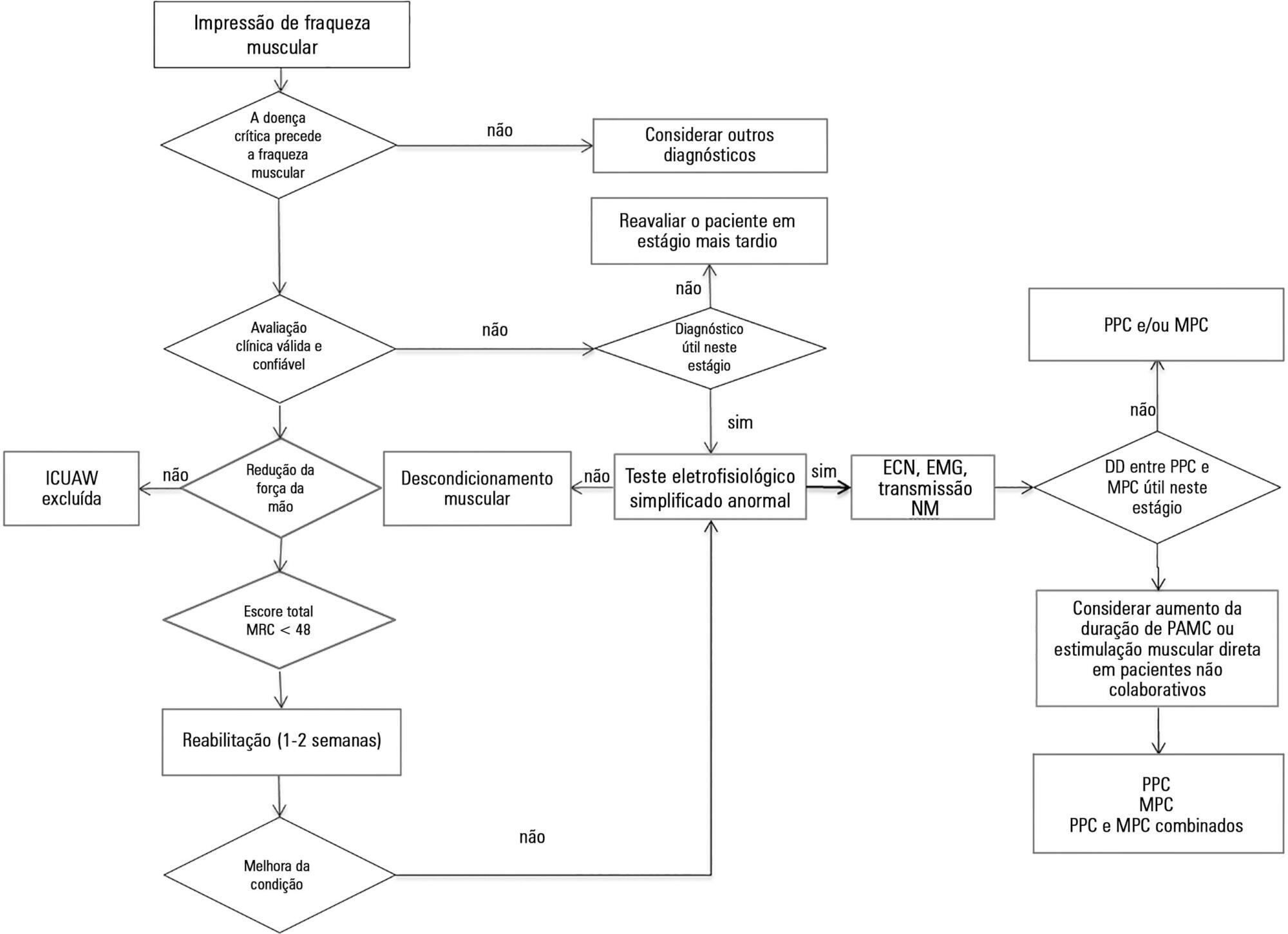
Intensive care unit (ICU) acquired muscle weakness (ICUAW) is a clinically detected condition characterized by diffuse, symmetric weakness involving the limbs and respiratory muscles.()Patients have different degrees of limb muscle weakness and are dependent on a ventilator, while the facial muscles are spared. Diagnosis of ICUAW requires that no plausible etiology other than critical illness be identified, and thus, other causes of acute muscle weakness are excluded. One major diagnostic criterion is that ICUAW is detected after the onset of critical illness; therefore, it is important to differentiate ICUAW from Guillain-Barrè syndrome or other acute neuromuscular disorders that may cause respiratory failure and ICU admission ().()The use of neuromuscular blocking agents for long periods of time, the use of some antibiotics and electrolyte abnormalities, such as hypermagnesemia, hypokalemia, hypercalcemia, and hypophosphatemia, and prolonged immobilization are common in the ICU and should be appropriately treated before a diagnosis of ICUAW is posed.()
A diagnosis of ICUAW is achieved by manually testing the muscle strength using the Medical Research Council (MRC) scale or by measuring handgrip strength using a dynamometer.
[…]
Search
Search in:


Comments